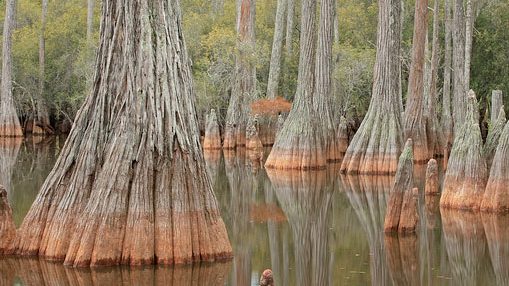Ecological Implications of Mangrove Forest Migration in the Southeastern United States

Principal Investigator: Michael Osland, USGS Wetland and Aquatic Research Center
Project Completion: September 2014. This project has now been completed.
Implements Science Plan Theme: 3, 4, and 5
LCC Partners: Gulf Coastal Plain & Ozarks, Gulf Coast Prairie, Peninsular Florida, South Atlantic
Overview
Coastal wetlands purify water, protect coastal communities from storms, sequester carbon, and provide habitat for fish and wildlife. They are also vulnerable to climate change. In particular, changes in winter climate (warmer temperatures and fewer freeze events) may transform coastal wetlands in the northern Gulf of Mexico, as mangrove forests are expected to expand their range and replace salt marshes.
The objective of this research was to evaluate the ecological implications of mangrove forest migration and salt marsh displacement. As part of this project, researchers identified important thresholds for ecosystem changes and highlighted coastal areas in the southeastern U.S. (e.g., Texas, Louisiana, and parts of Florida) where relatively small changes in winter conditions could cause relatively dramatic changes in coastal wetlands. Results indicate that mangrove forest expansion will bring about both above- and below-ground ecosystem changes. The most striking and apparent changes will occur above ground as forests develop and replace grasslands. These above-ground transformations will increase carbon storage and affect certain societal benefits provided by coastal wetlands in the region. The below-ground changes due to mangrove expansion will be more subtle and dependent upon the marsh that is being replaced. The below-ground impacts will be greatest along dry coasts (Texas), where mangrove expansion is expected to result in greater peat development and soil carbon storage. That said, there is no “one-size-fits-all” model for what will happen – the type and extent of changes will depend heavily on the specific characteristics of the site.
The data and publications from this work can help environmental managers and decision makers plan and prepare for future change in coastal wetlands and related impacts to fish and wildlife populations and ecosystem services.
